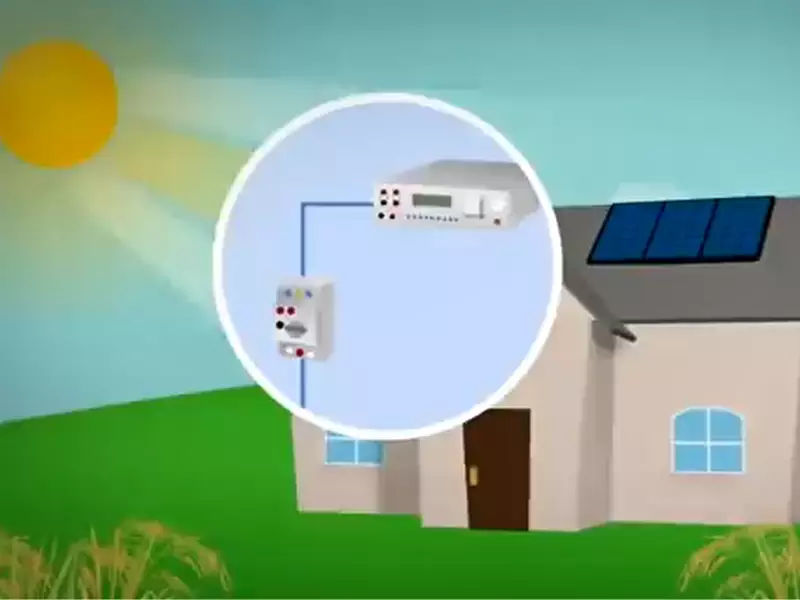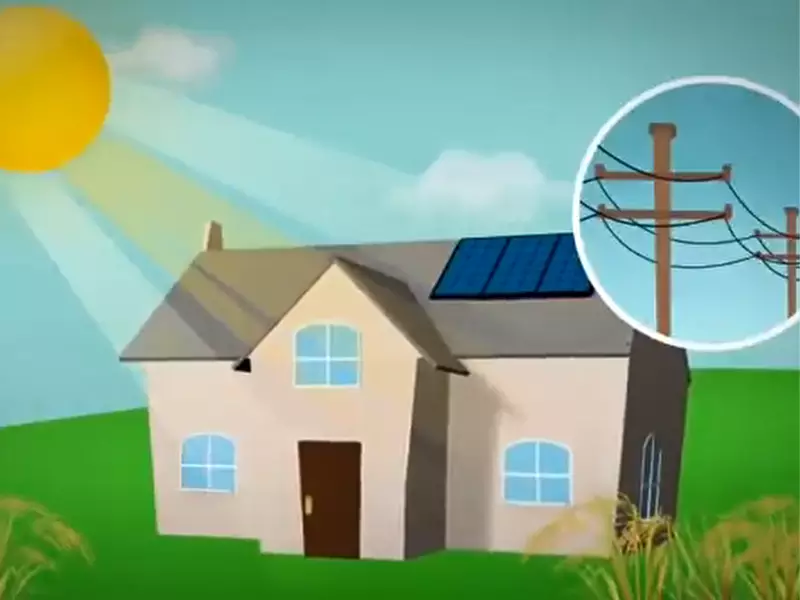Solar energy, a term that you might have frequently come across, but do you truly comprehend its potential and its many uses? Solar energy is the most abundant energy resource on Earth, and it’s a key solution to the global energy crisis we face. It offers a wide range of applications with immense benefits for both our planet and its inhabitants.
Delving into the heart of the matter, solar energy is primarily used for three fundamental purposes – power, heat, and light. Tapping into the power of the sun for these uses has ushered in a new era of sustainability, transforming the way we power our lives. From solar-powered homes and industries to solar heating systems and solar lighting, the sun’s energy is a crucial player in our everyday lives.
We’re about to embark on a journey that will shine a light on the remarkable world of solar energy and its applications. So, get ready to be enlightened about how the sun’s energy, converted into a usable form, plays a pivotal role in driving forward a sustainable future.
What is Solar Energy?
Solar energy is radiant light and heat from the sun harnessed using a range of technologies such as solar panels and photovoltaic cells. These technologies allow us to convert the sun’s rays into usable energy for various applications.
Throughout history, mankind has harnessed this energy in ingenious ways. From the simplest applications, such as drying clothes in the sun, to powering sophisticated satellites in space, solar energy’s use has transcended through ages.

How Does Solar Energy Generate Power?
The generation of power through solar energy primarily revolves around a process known as the photovoltaic effect. This process occurs in solar panels, which consist of many smaller units called photovoltaic cells.
These cells contain a semiconducting material, usually silicon, that generates electric current when exposed to sunlight. This electric current is then harvested and used to power a wide array of devices, from small appliances to entire power grids.
Applications of Solar Energy
Solar Energy for Water Heating
Solar water heaters are devices that capture sunlight to heat water. They’re an environmentally friendly and cost-effective alternative to traditional water heaters. Solar water heaters are broadly classified into two types: active and passive. Active systems use pumps to circulate water, while passive systems rely on natural convection.
A popular example of this application can be found in Israel. Thanks to its sunny climate and government incentives, Israel is a global leader in solar water heating, with over 85% of homes using solar water heaters.
Pumping Water for Irrigation using Solar Energy
Solar-powered irrigation systems offer an economical, sustainable, and reliable watering solution, particularly in remote areas without access to the electrical grid. These systems use solar panels to power electric pumps, which draw water from a source such as a well, river, or lake.
In India, an agricultural nation with abundant sunlight, solar-powered irrigation systems are becoming increasingly popular among farmers. These systems enable them to irrigate their crops without relying on diesel generators or the grid, thus saving money and reducing carbon emissions.
Solar Energy for Distillation
Solar distillation is a process where sunlight is used to evaporate water, leaving behind contaminants. The vapor is then condensed to produce clean water. This method is particularly useful in remote areas and in situations where clean drinking water is scarce.
One example of solar distillation is the Eliodomestico solar still, designed by Italian designer Gabriele Diamanti. It’s an eco-friendly and cost-effective device that uses solar energy to purify seawater, making it a practical solution for coastal communities lacking fresh drinking water.

Solar Cooking
Solar cooking uses sunlight for cooking, drying, and pasteurization. It offers a clean, fuel-free cooking method, particularly useful in regions with abundant sunlight and limited access to cooking fuels.
There are three main types of solar cookers:
- Solar Box Cookers: These are insulated boxes with a transparent top. They trap sunlight to heat up food placed inside.
- Solar Panel Cookers: These use reflective panels to focus sunlight onto a pot or pan.
- Solar Parabolic Cookers: These cookers use a parabolic reflector to focus sunlight onto a cooking vessel, achieving higher temperatures.
The Solar Cookers International, a non-profit organization, promotes solar cooking in regions like Africa, where deforestation and smoke from cooking fires are significant issues.
Drying Animal and Agricultural Products using Solar Energy
Solar drying is a process used to remove moisture from agricultural and animal products, making them easier to store and transport. Solar dryers use sunlight to heat air, which then removes moisture from the product.
In Sri Lanka, for instance, farmers use solar dryers to dry spices like cinnamon and pepper, preserving their aroma and color better than traditional open-air drying.
Solar Powered Greenhouses
Solar-powered greenhouses use solar panels to generate the electricity needed to control temperature, ventilation, and lighting, optimizing plant growth conditions.
BayBerry Fresh, a farm in Fort Collins, Colorado, uses a solar-powered greenhouse to grow raspberries year-round, demonstrating how solar energy can support sustainable agriculture even in colder climates.
Portable Solar – Charging on the Go
Portable solar chargers convert sunlight into electricity to power electronic devices on the go. These devices are a boon for outdoor enthusiasts and travelers, allowing them to charge phones, cameras, GPS devices, and even laptops without access to the power grid.
A popular example is the BioLite SolarPanel 10+, a lightweight and portable solar charger that can power smartphones and other small devices.
Solar Lighting
Solar lighting uses solar cells to convert sunlight into electricity, which is stored in batteries for use at night. Solar lights are a cost-effective, energy-efficient, and environmentally friendly solution for lighting up streets, homes, and public spaces.
One notable example is the ‘Liter of Light’ project in the Philippines. This initiative has installed thousands of solar bottle lights made from recycled plastic bottles in low-income communities, providing an affordable and sustainable lighting solution.

Solar Ventilation
Solar ventilation systems use solar energy to power fans that circulate air, improving indoor air quality and reducing the need for air conditioning.
The Solar Star Attic Fan, for instance, is a solar-powered ventilation system that reduces heat build-up in the attic, enhancing comfort and energy efficiency in homes.
Solar Heating Inside Buildings
Solar heating systems capture sunlight to generate heat for homes and commercial buildings. They’re a sustainable way to provide space heating and reduce heating costs.
For instance, the Drake Landing Solar Community in Canada uses an array of solar collectors and a district heating system to supply 90% of the community’s space heating needs with solar energy.
Solar Ponds
A solar pond is a body of water in which the bottom layer is heated by sunlight, and this heat is trapped by a layer of saltwater above, preventing it from escaping. Solar ponds can be used for various purposes, including electricity generation, space heating, and industrial process heating.
The world’s largest solar pond was the Beit HaArava pond in Israel, which produced 5 MW of electricity until it was decommissioned in 1988.
Benefits of Using Solar Energy
Solar energy, harnessed from the power of the sun, offers numerous advantages over traditional energy sources. It provides a sustainable, renewable, and clean source of energy that can power diverse applications, from small household appliances to large industrial facilities. Here are some of the key benefits of using solar energy:
Environmentally Friendly
Unlike fossil fuels, solar energy does not emit harmful pollutants or greenhouse gases. By reducing our reliance on coal and natural gas for electricity, solar energy can significantly lower carbon emissions, contributing to cleaner air and combating climate change.
Renewable and Abundant
Solar energy is a renewable resource, meaning it’s not going to run out anytime soon. As long as the sun is shining, we have access to solar energy. It’s available worldwide and in abundance, making it a reliable and sustainable energy source.
Reduces Energy Bills
By generating your own electricity with solar panels, you can significantly reduce your monthly utility bills. Furthermore, with net metering, homeowners can sell excess solar power back to the grid, offsetting the costs even further.
Diverse Applications
As we’ve seen, solar energy can be used for a myriad of purposes, from lighting and heating to running household appliances and industrial equipment. It can produce electricity in areas without access to the energy grid, distill water in regions with limited clean water supplies, and power satellites in space.

Stimulates Economic Growth
The solar industry creates job opportunities in manufacturing, installation, maintenance, and more. According to the Solar Foundation, the solar industry adds jobs many times faster than the overall U.S. economy.
Energy Independence
Solar energy promotes energy independence. By investing in solar energy, countries can reduce their dependence on foreign oil and fossil fuels, leading to greater energy security.
Low Maintenance Costs
Solar panels require minimal maintenance. Once installed, they need to be cleaned a few times a year, and most reliable manufacturers offer 20-25 years of warranty. Additionally, there are no moving parts involved in most solar applications, reducing the risk of damage.
Expanding Solar Applications: A Look into the Future
Solar energy, given its versatility and environmental advantages, is being increasingly integrated into new areas. From cutting-edge technologies to everyday applications, solar power promises a bright future.
Solar-Powered Transport
Solar energy is starting to fuel the transport sector too. Solar-powered electric cars, boats, and even planes are becoming a reality, representing a significant stride towards sustainable transport. An example is the Lightyear One, a solar electric vehicle that uses integrated solar cells on its roof and hood to charge the battery, providing a range of up to 450 miles.
Solar-Powered Smart Cities
Smart cities around the world are integrating solar power into their design to improve energy efficiency and sustainability. From solar-powered streetlights and public charging stations to solar-powered public transportation and smart homes, solar energy is key to these cities’ infrastructure. Masdar City in Abu Dhabi, a planned city project designed to be a hub for cleantech companies, is a shining example.
Space Applications
Solar energy also plays a pivotal role in space exploration. Spacecraft and satellites use solar panels to power their systems. The International Space Station, for example, has an expansive array of solar panels that power its onboard systems. Future space missions plan to use solar energy for propelling spacecraft and supporting human outposts on the Moon and Mars.
General Solar Panel FAQ
What problems do solar panels solve?
Solar panels primarily address the challenge of dependence on fossil fuels for electricity generation. By producing clean, renewable energy, they mitigate the environmental impact associated with conventional power sources, such as air pollution and greenhouse gas emissions. Moreover, they help to decrease energy bills and contribute to energy independence.
What are 3 important uses of solar panels?
- Residential Use: Solar panels are extensively used in homes to generate electricity for appliances and heat water.
- Commercial Use: Many businesses and industries utilize solar energy for their operations to reduce energy costs and carbon footprint.
- Off-grid applications: In remote areas without access to the power grid, solar panels provide a crucial energy source.
Do solar panels give you free electricity?
Yes and no. While the sunlight that hits your solar panels is free, there’s an upfront cost for the solar panels themselves, their installation, and maintenance. However, after that initial investment, the electricity they generate is essentially free.
How much will my electric bill be with solar panels?
The exact amount varies depending on the size of your solar system, your energy usage, and local climate. However, solar panels can significantly reduce your electricity bills. In many cases, people have been able to offset their entire electricity bill.
Do you save money with solar panels?
Yes, solar panels can save you money in the long run by reducing or even eliminating your electricity bills. Moreover, many regions offer tax credits, rebates, and incentives for installing solar panels, which can further increase savings.
Can solar panels power a house 24-7?
Solar panels only produce electricity when there’s sunlight. However, with a battery storage system, excess energy produced during the day can be stored and used at night or during cloudy days, effectively powering a house around the clock.
Do I need to tell my energy supplier I have solar panels?
This depends on local regulations, but generally, it’s advisable to inform your energy supplier if you’re planning to connect your solar system to the grid.
What are solar cells known as and why?
Solar cells, also known as photovoltaic cells, are named for their ability to convert sunlight (“photo-“) directly into electricity (“-voltaic”). They are the primary components of a solar panel.
What type of solar panels are most efficient and why?
Monocrystalline solar panels are currently the most efficient. They’re made from a single crystal structure which allows electrons, excited by sunlight, to flow more easily, leading to a higher efficiency.
Does heat enter your home through the roof?
Yes, heat can enter your home through the roof, especially if it’s not well-insulated. A cool roof, or a rooftop solar panel installation, can help reduce heat gain by reflecting more sunlight and absorbing less heat.
Conclusion
Solar energy, with its diverse applications, has the potential to revolutionize the way we produce and consume energy. Its utilization in power generation, heating, and lighting is only the tip of the iceberg. With continuous technological advancements, solar energy is expected to penetrate deeper into our lives and industries, making a significant contribution to a sustainable future.
From household applications such as water heating and cooking to large-scale applications like powering irrigation and heating buildings, solar energy is reshaping the energy landscape. It’s more than just an alternative source of energy; it’s a pathway to energy independence, economic savings, and a cleaner, greener planet.
